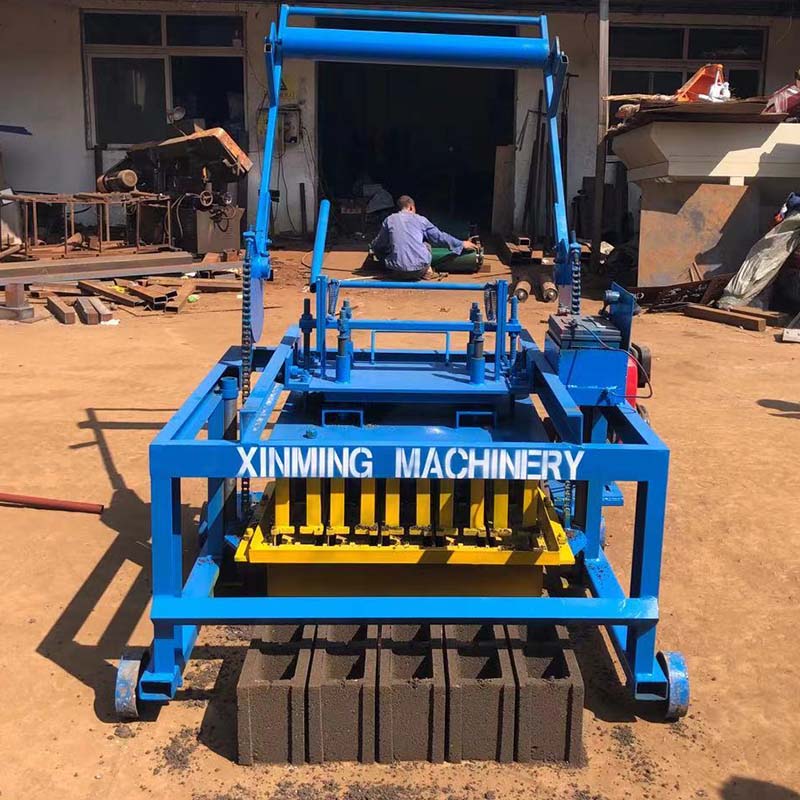
Image source:Aiwei block machine
Introduction
Brick, one of the oldest and most versatile building materials, has transcended its conventional role to become a canvas for architectural creativity. The fusion of traditional brick craftsmanship with modern design sensibilities has given rise to a renaissance in brick architecture. This article delves into the evolving art of modern brick design, exploring how architects are pushing the boundaries of creativity and customization while embracing the inherent charm and timelessness of this age-old material.
1. The Revival of Brick: Tradition Meets Innovation
In an era of cutting-edge technologies and innovative materials, bricks have found renewed relevance as architects and designers reimagine their potential.
- Historical Significance: Bricks carry a rich historical legacy, connecting modern architecture to its roots.
- Aesthetic Appeal: The warm tones, textures, and visual depth of bricks create a distinct architectural aesthetic.
2. Beyond Red Rectangles: Exploring Design Possibilities
Modern brick design goes beyond the traditional rectangular form, allowing for innovative shapes, sizes, and patterns.
- Modular Design: Designers are experimenting with modular brick arrangements, creating intricate patterns and textures.
- Custom Shapes: Custom-made bricks enable architects to realize unique visions, from curves to irregular shapes.
3. Creative Brickwork Patterns
Innovative brickwork patterns add depth, character, and visual interest to architectural compositions.
- Herringbone: The classic herringbone pattern takes on new life in contemporary designs, infusing spaces with dynamism.
- Basketweave: Basketweave patterns add a sense of texture and rhythm to brick facades, imparting a tactile quality.
4. Texture Play: Contemporary Brick Facades
Modern brick design plays with textures to create captivating facades that interact with light and shadow.
- Stacked Bonds: Stacked bonds, where bricks are aligned vertically, add a sleek and modern feel to buildings.
- Tactile Finishes: Rough textures and tactile finishes create engaging facades that change with lighting conditions.
5. Color Variation and Palette Exploration
The color palette of bricks extends beyond traditional red to a spectrum of hues, adding another layer of creativity.
- Earth Tones: Bricks in earthy tones resonate with nature, contributing to sustainable and harmonious designs.
- Contrast and Accent: Contrasting brick colors highlight architectural features and add drama to facades.
6. Blending Tradition with Modernity
Modern brick design seamlessly merges traditional bricklaying techniques with contemporary aesthetics.
- Exposing Joints: Recessed or overemphasized joints create a play of light and shadow, adding dimension to facades.
- Incorporating Glass and Metal: Integrating glass or metal elements with bricks adds a futuristic touch to traditional designs.
7. Sustainability and Design Integration
The choice of brick aligns with sustainable design principles, contributing to energy efficiency and durability.
- Thermal Mass: Brick’s high thermal mass contributes to energy-efficient buildings by regulating temperature.
- Adaptability: The adaptability of bricks to various design styles allows for sustainable integration in diverse projects.
8. Iconic Examples of Modern Brick Design
Numerous iconic structures showcase the possibilities of modern brick design.
- The Tate Modern, London: The extension to the Tate Modern employs a perforated brick lattice to create a dynamic facade.
- Fassade House, Sankt Augustin: This residential project in Germany features an expressive facade composed of individual brick boxes.
9. Preservation and Innovation
Modern brick design also plays a role in preserving architectural heritage while embracing innovation.
- Restorations: Modern brick design reimagines historic buildings, preserving their essence while embracing contemporary functionality.
- Urban Context: Combining traditional brick facades with modern structures maintains visual continuity in urban environments.
Conclusion: Modern Brick Design as an Art Form
Modern brick design transcends the conventional, evolving into an art form that encapsulates both tradition and innovation. Architects, armed with the tools of creativity, are breathing new life into bricks, demonstrating their versatility and adaptability in the contemporary architectural landscape. The marriage of form and function, tradition and modernity, results in buildings that tell stories, engage the senses, and stand as testaments to the artistry inherent in architectural design. As the world continues to evolve, the allure of modern brick design remains timeless, connecting the past with the future through the ever-evolving medium of bricks.
